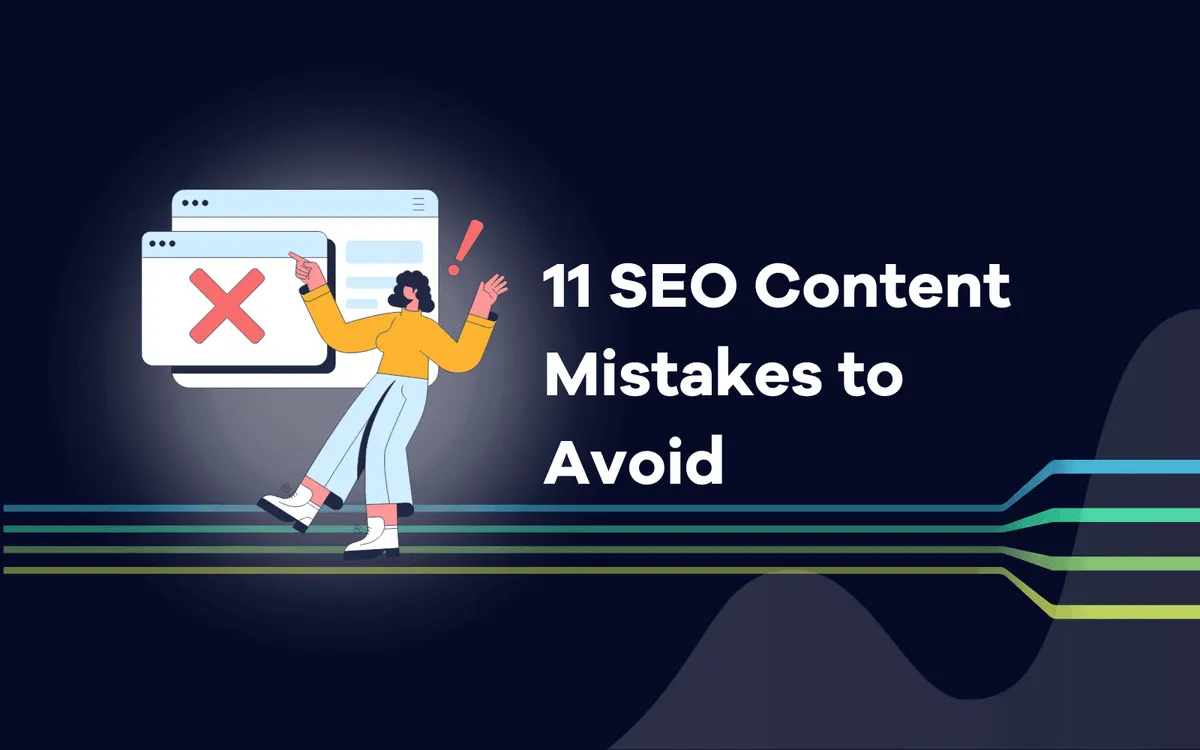
11 SEO Content Mistakes to Avoid

Divashree
September 13, 2023
Discover the top 11 SEO content mistakes to steer clear of for higher rankings and better visibility. Boost your website's performance today
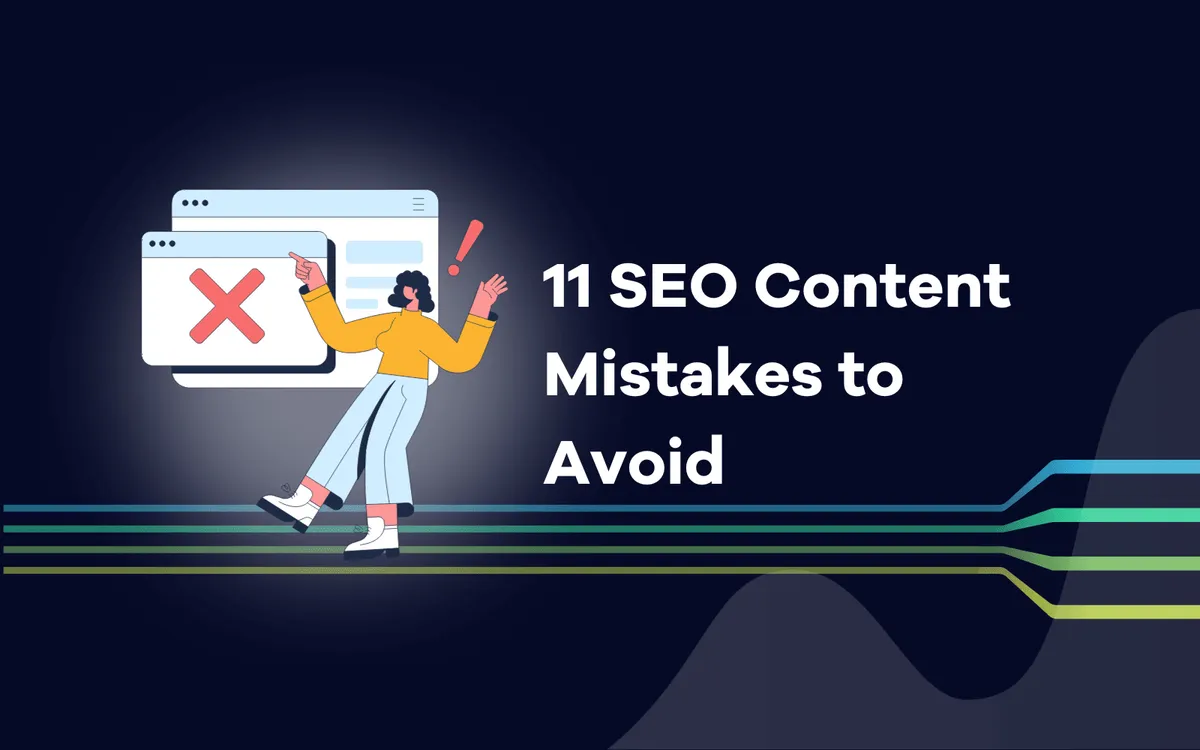
Creating effective SEO content is a cornerstone of digital success, driving organic traffic, engagement, and conversions. However, the journey to crafting content that ranks well and resonates with audiences is riddled with potential pitfalls. To achieve optimal results, it's imperative to be aware of and avoid common SEO content mistakes.
Navigating the intricacies of search engine algorithms requires a strategic approach. This involves understanding user intent, optimizing for relevant keywords, and adhering to search engine guidelines. Yet, many inadvertently stumble into pitfalls that hinder their content's visibility and impact.
In this context, steering clear of SEO content mistakes becomes paramount. From keyword stuffing and thin content to neglecting the importance of mobile optimization and overlooking the value of high-quality backlinks, these errors can compromise not only search rankings but also user experiences. Crafting SEO content is an art that harmonizes creativity, relevance, and technical precision.
This exploration delves into the crucial facets of SEO content creation, shedding light on pitfalls to avoid and strategies to embrace. By gaining insights into these mistakes, you'll be better equipped to forge a path toward content excellence that not only resonates with algorithms but also fosters meaningful connections with your target audience.
Keyword Stuffing
Keyword stuffing in SEO refers to the practice of excessively and unnaturally incorporating keywords into website content, meta tags, or other elements in an attempt to manipulate search engine rankings. This outdated technique aims to deceive search engines into ranking a page higher for specific keywords, regardless of the content's quality or relevance.
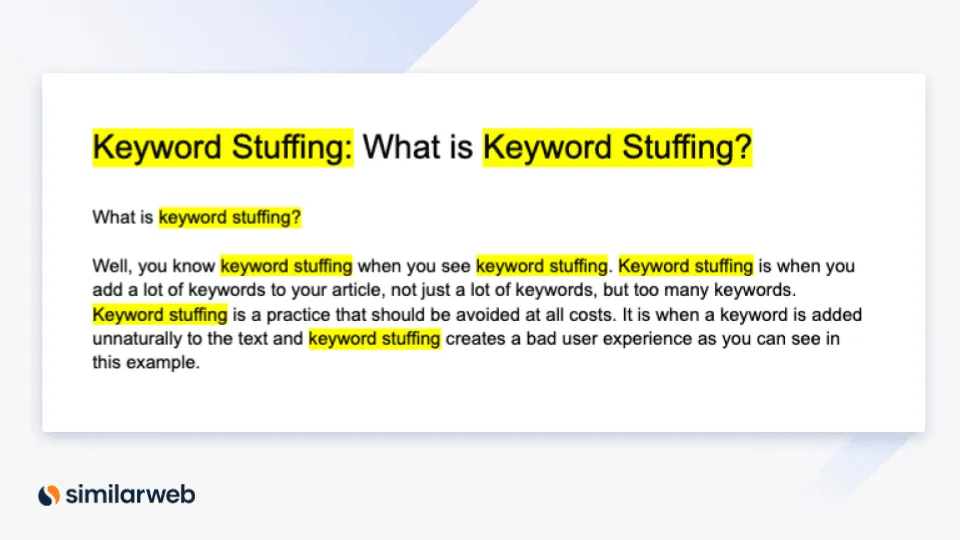 Source: Similarweb
Source: SimilarwebHowever, search engines have evolved significantly and now employ sophisticated algorithms that can detect and penalize keyword stuffing. This results in lower search rankings or even removal from search results altogether. Keyword stuffing leads to poor user experiences as well, as content becomes difficult to read and lacks value.
Modern SEO emphasizes user intent and high-quality content. Instead of focusing solely on keywords, businesses should strive to provide valuable information that addresses user needs naturally. Incorporating relevant keywords in a meaningful context is essential, but overusing them can harm both SEO and user engagement.
Using variations of keywords, synonyms, and related terms is more effective for reaching a wider audience while maintaining readability. By creating authentic, informative content that resonates with users, businesses can achieve sustainable and meaningful search rankings without resorting to keyword stuffing.
Not Using User-Generated Content on a Website
Integrating user-generated content (UGC) into a website offers a multitude of advantages. Firstly, UGC stands for content created by users that is authentic and trustworthy.
UGC showcases real opinions, experiences, and contributions from users, creating an environment where visitors can relate to others' experiences, ultimately building confidence in the brand or website. Furthermore, UGC can significantly boost a website's search engine optimization (SEO) efforts.
Search engines prioritize fresh, user-generated content as it reflects real-time engagement and can enhance rankings. UGC also fosters increased user engagement, transforming the website into an interactive hub where users feel a sense of community and connection. Moreover, it's a cost-effective solution for content generation, reducing the need for continuous in-house production.
Diverse content formats, from reviews to videos, cater to various user preferences, enriching the overall user experience. Positive UGC, such as testimonials and recommendations, serves as social proof that can sway potential customers' decisions and drive conversions.
In sum, incorporating UGC strategically can elevate a website by enhancing authenticity, boosting SEO, encouraging user engagement, and creating a loyal and trusting user community.
Ignoring User Intent
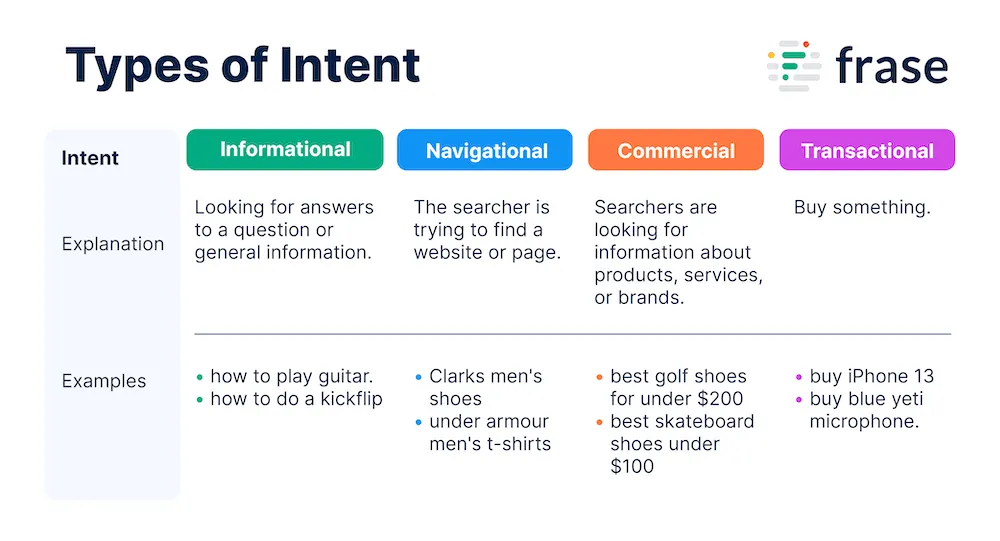 Source: Frase
Source: FraseIgnoring user intent in SEO is a critical mistake that can undermine the effectiveness of digital marketing strategies. User intent refers to the specific purpose or goal behind a user's search query, whether it's to seek information, make a purchase, or find a local business. Failing to consider user intent can lead to irrelevant content, frustrated users, and diminished search rankings.
When SEO efforts don't align with user intent, bounce rates increase, dwell time decreases, and conversion rates suffer. Search engines prioritize providing users with the most relevant and valuable results, so ignoring user intent can result in poor rankings and reduced visibility.
Keyword research should be centered around understanding different facets of user intent, such as informational, navigational, transactional, and commercial queries. Content should then be tailored to fulfill these specific intents. This user-centric approach not only improves SEO performance but also enhances the overall user experience.
For example, “plumber salary” and “plumber rate” may seem like comparable keywords on the surface, but when you analyze user intent on the SERP for each, it’s not the case.
In summary, neglecting user intent in SEO leads to suboptimal outcomes. Successful SEO strategies should revolve around meeting user needs and delivering valuable content that resonates with their intentions, ultimately driving higher engagement, conversions, and search visibility.
Thin Content
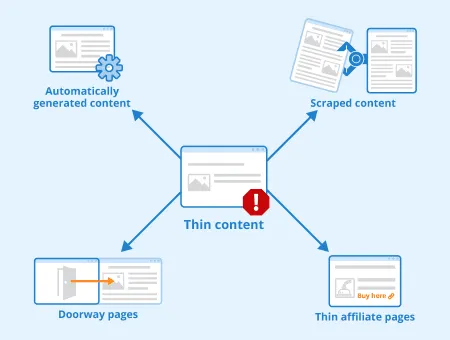 Source: Seobility
Source: SeobilityThin content in SEO refers to web pages that lack substantive value, depth, or relevance. It's characterized by its brevity and often contains little to no meaningful information, providing minimal value to users. Thin content can hinder a website's search engine rankings and user experience.
Search engines like Google aim to deliver the most relevant and high-quality results to users. Websites with thin content are at risk of receiving lower rankings or being flagged for low quality. This can result in reduced organic traffic and visibility.
Common examples of thin content include pages with minimal text, duplicate content, doorway pages, and auto-generated content. Such content doesn't adequately address user queries or provide valuable insights.
To avoid thin content, businesses should focus on creating comprehensive, original, and valuable content that addresses user needs. In-depth articles, guides, and resources that thoroughly cover a topic are more likely to attract user engagement and search engine recognition.
Regularly updating and refreshing content is crucial to maintaining its relevance and usefulness over time. Eliminating duplicate content and optimizing existing pages can also improve a website's overall SEO performance.
In conclusion, thin content not only fails to provide value to users but also harms a website's SEO efforts. By prioritizing quality, depth, and relevance in content creation, businesses can improve user experiences and increase their chances of ranking well in search engine results.
Neglecting Mobile Optimization
Neglecting mobile optimization in SEO is a significant oversight that can have detrimental effects on a website's search rankings, user experience, and overall online success as we all know that a good web design, that is optimised for all types of screens, can help you to rank faster and boost your business. With the growing prevalence of mobile devices for internet access, mobile optimization is not just a preference but a necessity.
Search engines like Google consider mobile-friendliness as a ranking factor. Websites that are not optimized for mobile devices may experience lower search rankings, reducing their visibility to potential users.
User experience is a critical aspect of SEO, and mobile users have different needs and behaviors compared to desktop users. Neglecting mobile optimization can result in slow loading times, poor navigation, and an overall frustrating experience. This often leads to higher bounce rates and lower engagement, negatively impacting SEO.
Mobile optimization involves responsive design, fast loading times, touch-friendly interfaces, and streamlined content. It's essential to ensure that images, videos, and other elements are properly formatted and accessible on mobile screens.
Furthermore, mobile optimization is crucial for local SEO. Many users conduct location-based searches on mobile devices, so websites that aren't optimized for local mobile searches miss out on potential customers.
In conclusion, mobile optimization is integral to successful SEO. Ignoring it can lead to lower search rankings, decreased user engagement, and missed opportunities for reaching a substantial portion of the online audience. Businesses should prioritize mobile-friendly design and ensure seamless experiences across all devices for effective SEO results.
Not Utilizing Headers and Formatting
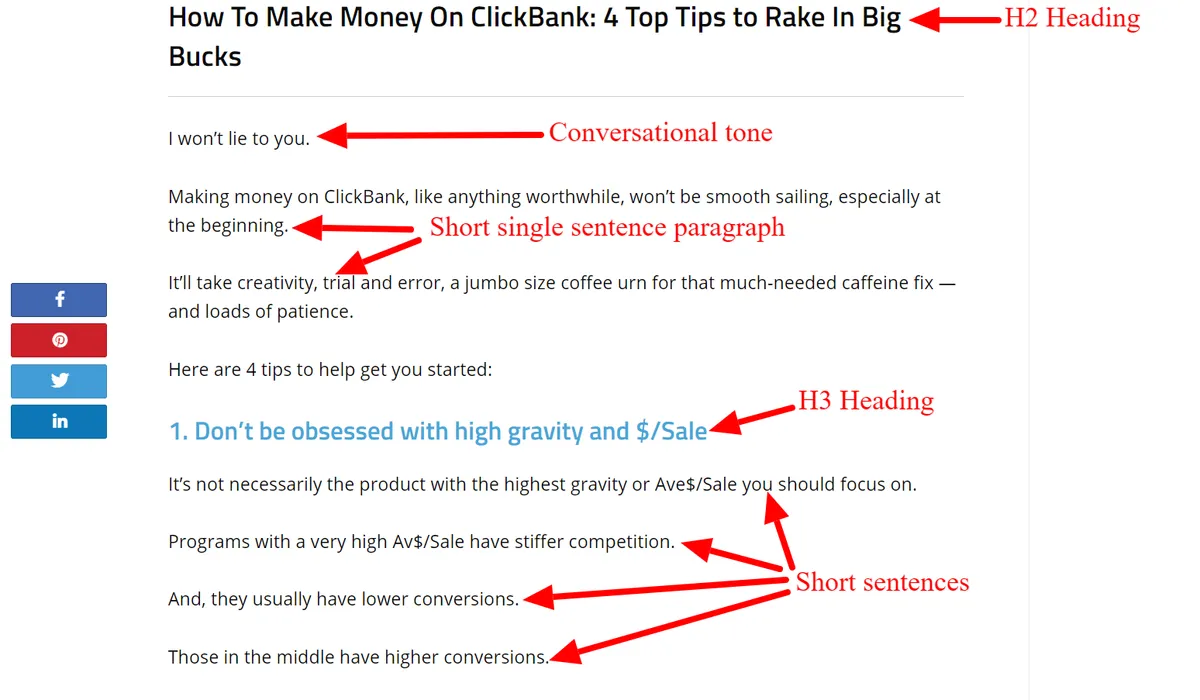 Source: Wholesomecommerce
Source: WholesomecommerceFailing to utilize headers and proper formatting in SEO can significantly impact a website's search rankings, user experience, and content readability. Headers (H1, H2, H3, etc.) and formatting (bold, italics, bullet points) play crucial roles in organizing content, signaling hierarchy, and making information digestible for both users and search engines.
Headers provide structure to content, breaking it into sections that guide readers and search engines through the main points of an article or page. Search engines use header tags to understand the content's structure and relevance, influencing how the page is indexed and ranked.
Proper formatting enhances content readability. Users tend to skim through content, and well-formatted text with bullet points, subheadings, and bolded keywords captures attention and improves user engagement. This leads to longer dwell times and decreased bounce rates, which are positive signals for SEO.
Headers also help search engines interpret the context and topic of the content. The H1 tag typically indicates the main topic of the page, while subsequent headers guide through subtopics. Properly using keywords in headers can positively impact search rankings.
In conclusion, not utilizing headers and formatting in SEO overlooks fundamental elements that impact content structure, user engagement, and search engine understanding. By incorporating headers, subheadings, and formatting techniques, websites can enhance content organization, readability, and search visibility, ultimately improving the overall effectiveness of their SEO strategy.
Ignoring Meta Data
Ignoring metadata in SEO is a missed opportunity to enhance a website's search visibility and click-through rates. Metadata, including meta titles, meta tags, and meta descriptions, is essential for conveying concise and relevant information to both search engines and users.
Meta titles are HTML elements that appear as clickable headlines in search results. They provide a succinct summary of a page's content and help search engines understand the page's topic. Ignoring meta titles can lead to vague or irrelevant search results, reducing the chances of attracting clicks.
Meta descriptions are short summaries that appear beneath the meta title in search results. They provide additional context about the page's content and can influence whether users click through to the website. Neglecting meta descriptions can result in search engines pulling random snippets from the page, which might not accurately represent the content's value.
By optimizing meta titles and meta descriptions with relevant keywords, businesses can improve their search rankings and increase click-through rates. A well-crafted meta description entices users to click, enhancing user engagement and potentially influencing search engines to view the page as more valuable.
In summary, ignoring metadata is detrimental to SEO efforts. Optimizing meta titles and descriptions ensures that search results accurately reflect the content and entice users to visit the website, positively impacting both search rankings and user experience.
Duplicate Content
Duplicate content in SEO refers to identical or substantially similar content that appears on multiple web pages, either within the same website or across different domains. Search engines aim to provide diverse and valuable search results, so encountering duplicate content can lead to confusion in determining which page should rank higher.
Search engines may penalize websites for having duplicate content, resulting in lower search rankings or even removal from search results. This can harm a website's visibility, organic traffic, and overall SEO efforts.
Duplicate content can arise unintentionally due to content management systems, printer-friendly versions of pages, or syndication of content across multiple sites. It's important to address such issues to prevent negative SEO consequences.
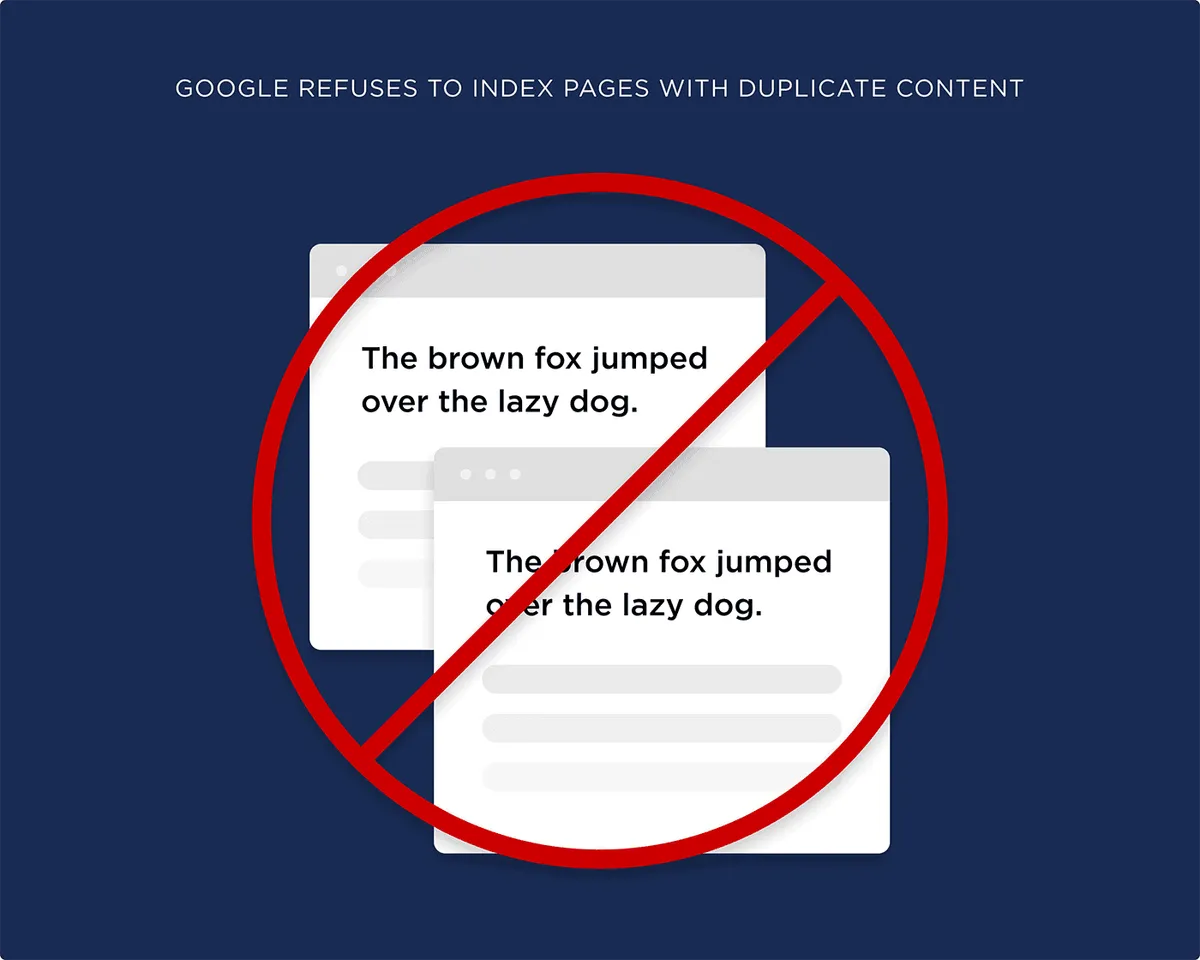 Source: Backlinko
Source: BacklinkoTo mitigate the impact of duplicate content, implementing canonical tags is recommended. Canonical tags inform search engines which version of a page should be treated as the authoritative source, consolidating ranking signals.
Creating original, valuable, and unique content is the best approach to avoiding duplicate content issues. For e-commerce websites, writing unique product descriptions and avoiding manufacturer-provided content is crucial.
In conclusion, duplicate content can harm a website's search rankings and user experience. By focusing on original content creation, using canonical tags, and addressing content management issues, businesses can enhance their SEO performance and improve their chances of ranking well in search results.
Neglecting Internal Linking
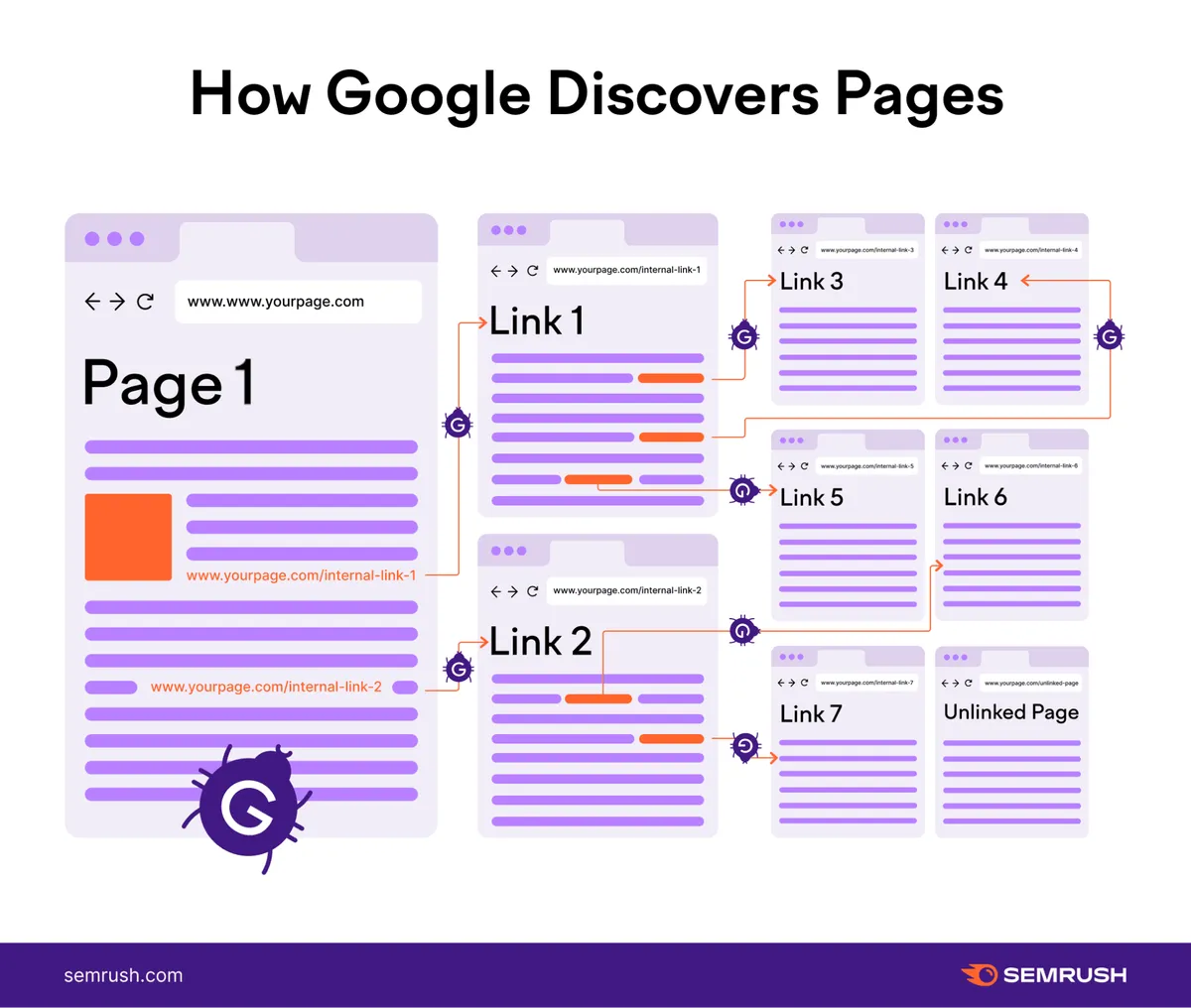 Source: Semrush
Source: SemrushNeglecting internal linking in SEO is a missed opportunity to enhance a website's search visibility, user experience, and overall content organization. Internal links are hyperlinks that connect one page of a website to another within the same domain. They play a crucial role in guiding both users and search engines through the content hierarchy and relationship.
Internal linking improves website navigation, helping users discover related and relevant content on the same site. This encourages users to spend more time on the website, reducing bounce rates and increasing engagement – factors that positively influence search rankings.
Search engines use internal links to understand the structure of a website and determine the importance and context of various pages. Neglecting internal linking can result in search engines misunderstanding the significance of specific pages, leading to lower rankings.
Internal links also distribute "link juice," the SEO value passed from one page to another. By strategically linking to important pages, businesses can boost their authority and rankings.
To optimize internal linking, create a logical structure with relevant anchor text, incorporate contextually relevant links, and ensure that important pages receive appropriate link equity.
In summary, neglecting internal linking limits a website's potential to enhance user experiences and improve search rankings. By implementing a well-structured internal linking strategy, businesses can optimize navigation, improve engagement, and effectively signal the importance of different pages to search engines.
Ignoring Image Optimization
Ignoring image optimization in SEO can lead to missed opportunities for enhancing search rankings, user experience, and website performance. Images are valuable visual assets that can attract users, improve engagement, and contribute to a well-rounded online presence.
Optimizing images involves several aspects, including file size, alt text, and image titles. Neglecting these factors can result in slow-loading pages, poor accessibility, and decreased search visibility.
Large image files can slow down website loading times, leading to higher bounce rates and lower search rankings. Compressing images while maintaining quality is crucial for a smooth user experience.
Alt text provides a textual description of an image, making it accessible to users with disabilities and helping search engines understand the image's context. Ignoring alt text can hinder accessibility and prevent images from being properly indexed.
Image titles and filenames should be descriptive and relevant to the content. Neglecting these can result in missed opportunities for optimizing images for search engines.
Optimized images can also appear in Google Image search results, driving additional organic traffic to the website. You can even use an image slider to boost engagement.
In conclusion, ignoring image optimization neglects a vital aspect of SEO. By compressing images, providing accurate alt text, and using descriptive filenames, businesses can improve page loading times, accessibility, and overall user experience, while also enhancing the likelihood of images being discovered in search results.
Ignoring Backlink Quality
Ignoring backlink quality in SEO is a significant oversight that can negatively impact a website's search rankings, authority, and overall online reputation. Backlinks, or incoming links from other websites, serve as endorsements of a website's credibility and relevance. However, not all backlinks are created equal, and the quality of these links is crucial for successful SEO.
Low-quality or spammy backlinks can lead to penalties from search engines, resulting in lower search rankings or even deindexing. These links can signal to search engines that a website is engaging in manipulative practices, undermining its credibility.
Backlink quality is determined by factors such as the authority of the linking domain, the relevance of the linking page's content, and the context in which the link is placed. Ignoring these factors can lead to a backlink profile that lacks authenticity and value.
Prioritizing high-quality, relevant, and authoritative backlinks is essential for building a strong online presence. Quality backlinks can improve domain authority, increase search rankings, and drive targeted organic traffic.
To ensure backlink quality, businesses should focus on earning links from reputable sources through content creation, outreach, and relationship-building. Regularly auditing and disavowing harmful links can also help maintain a healthy backlink profile.
Ignoring backlink quality jeopardizes a website's SEO efforts. By emphasizing high-quality, relevant backlinks and avoiding manipulative tactics, businesses can establish authority, improve search rankings, and build a trustworthy online presence.
Conclusion
In the realm of SEO, steering clear of content mistakes is imperative for achieving success in search engine rankings, user engagement, and online visibility. Failing to avoid these errors can lead to diminished search performance and hinder the overall effectiveness of digital marketing strategies.
Neglecting user intent, keyword stuffing, and ignoring mobile optimization can hamper user experiences and result in lower search rankings. Crafting valuable, comprehensive, and well-structured content while embracing headers, formatting, and internal linking is essential to cater to user needs and enhance search visibility.
Overlooking metadata, duplicate content issues, and the quality of backlinks can lead to confusion for both users and search engines. To ensure an effective SEO strategy, metadata must be optimized, and duplicate content must be avoided through original content creation and canonical tags. Prioritizing the quality and relevance of backlinks is crucial to building a trustworthy online presence and establishing authority.
In conclusion, steering clear of these content mistakes is pivotal for a successful SEO approach. By creating user-focused, valuable content, optimizing technical aspects, and nurturing a robust backlink profile, businesses can navigate the ever-evolving landscape of SEO, effectively connect with their target audience, and achieve meaningful online visibility.
Related blog posts
The Hidden Flaws in Search Volumes and How to Solve Them
Learn how AI Search Volume delivers reliable search volumes by combining GKP, GSC, and Trends so that you can prioritize the right keywords.
1 July 2025
AI Overviews Are Taking Over SERPs
From traffic drops to decreasing CTRs, AI Overviews are shaking up SEO. Learn what is happening and how AccuRanker helps you track AIO.
25 June 2025
How AccuRanker’s AI Models Fix Inaccurate SEO Data
Struggling with unreliable SEO data? Discover how AccuRanker’s CTR, Search Intent, Search Volume, and Share of Voice deliver accurate insights.
1 June 2025




